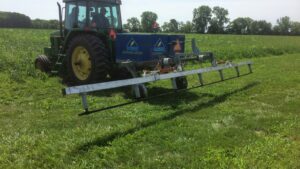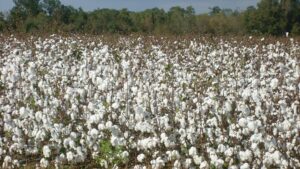Just as a mechanic relies on a well-stocked toolbox to get the job done, farmers value the weed control tools currently on the market, and that includes dicamba.
As harvest gets underway for the 2018 crop, farmers across the country, in a multitude of settings, are finding that dicamba has helped them realize better yields and trim their expenses.
Texas farmer Kenny Poehls started harvesting his 1,100 acres of cotton in mid-August. Pre-emergent applications of dicamba kept glyphosate-resistant pigweed in check during the growing season and allowed him to plant Deltapine seed.
“I’ve tried out other seed but I’ve come back to the varieties that yield better,” Poehls said. “Dicamba is really the only thing that’s worked well for us.”

Chuck Wilmot, general manager of Schneider’s Milling in Waverly, Iowa, said dicamba delivered results in a variety of situations for area soybean growers.
“This year we had some growers opt to plant Roundup Ready 2 Xtend soybeans seed, but they didn’t intend to use the herbicide program. Then we had all kinds of windy and rainy days and weeds just got away from us,” Wilmot said.
At that point, XtendiMax herbicide with VaporGrip Technology was the best weed control option and after application, growers were happy with the results.
“They had good clean fields,” Wilmot said, noting that waterhemp poses the biggest weed challenge in the region.
Looking into 2019, some of his customers are exercising their options to use dicamba more widely.
“We had a few growers who used the dicamba program on their toughest fields with a history of weed problems this year and now, for next year, they plan to plant all Roundup Ready 2 Xtend soybeans,” Wilmot said. “Dicamba is a nice tool to grab out of your toolbox if you need it.”
Poehls said he found training classes to be helpful. He attended one himself and accompanied a group of his employees for another session.
“I use the RRXtend Spray App to watch the forecast for temperature inversion risk and wind speed,” Poehls said.

To ensure it stays on the market, farmers must be committed to using dicamba properly, he said.
“We have to do our part to keep it working for us. We as farmers need to be good stewards and make applications the right way,” Poehls said.
Wilmot concurs.
“Those growers and applicators who followed the rules and regulations didn’t have any issues this year,” he said.
Without dicamba as an option, Iowa soybean growers would be faced with one of two options, Wilmot believes.
“We’d go back to having weedy fields or growers would have greater expense trying to control challenging weeds.”
Poehls said he would be in the same situation on his cotton acres.
“Dicamba is the cheapest and most effective way to control the weeds,” he said.












